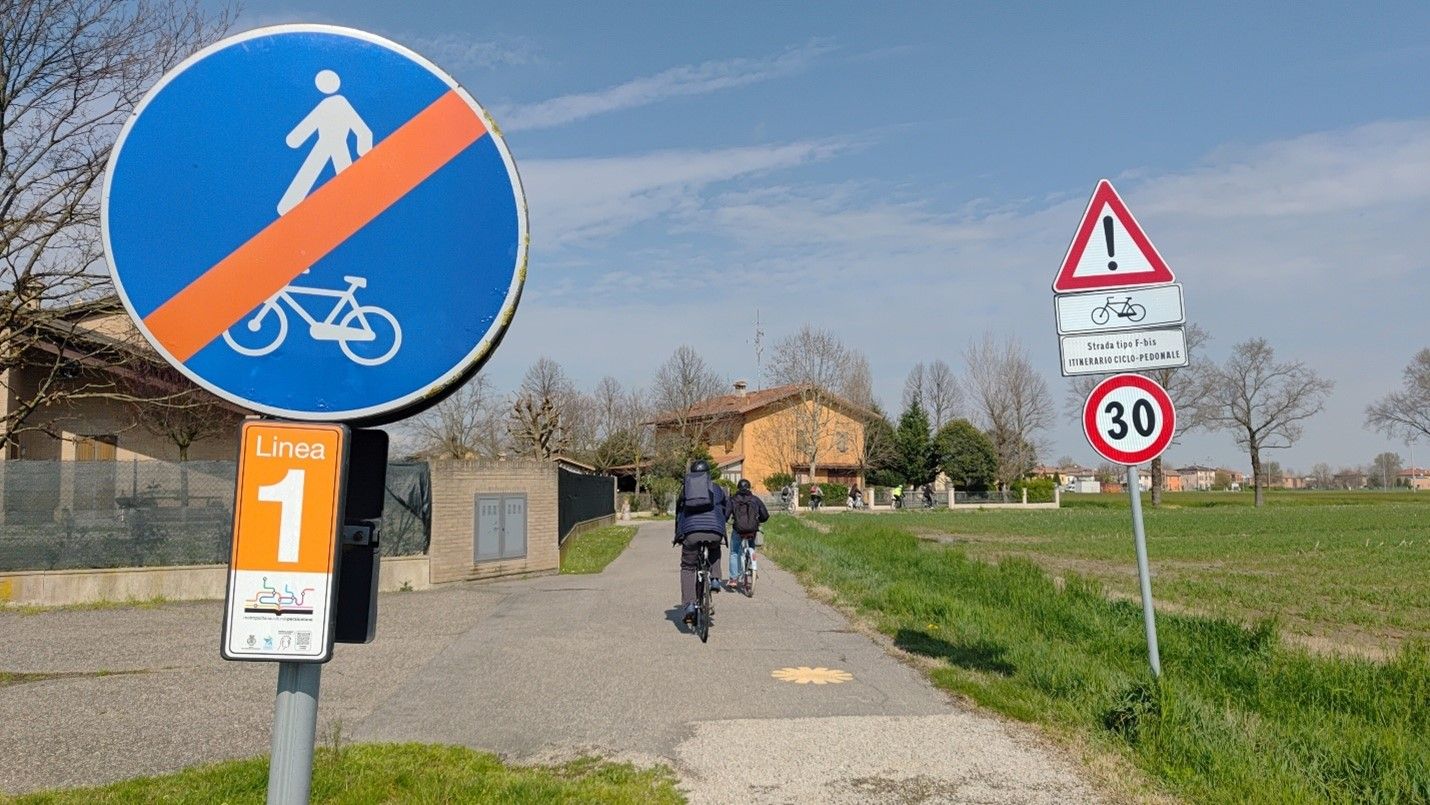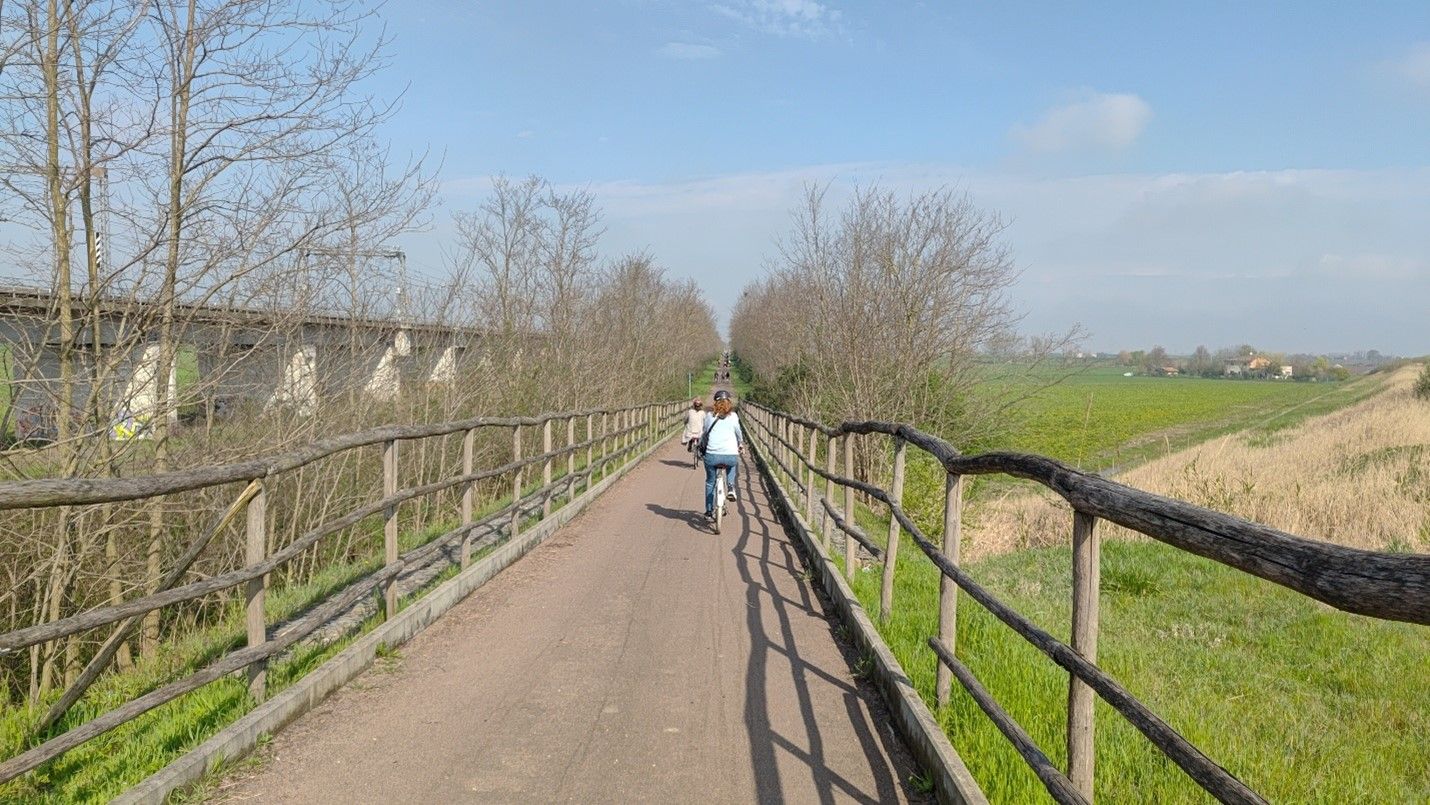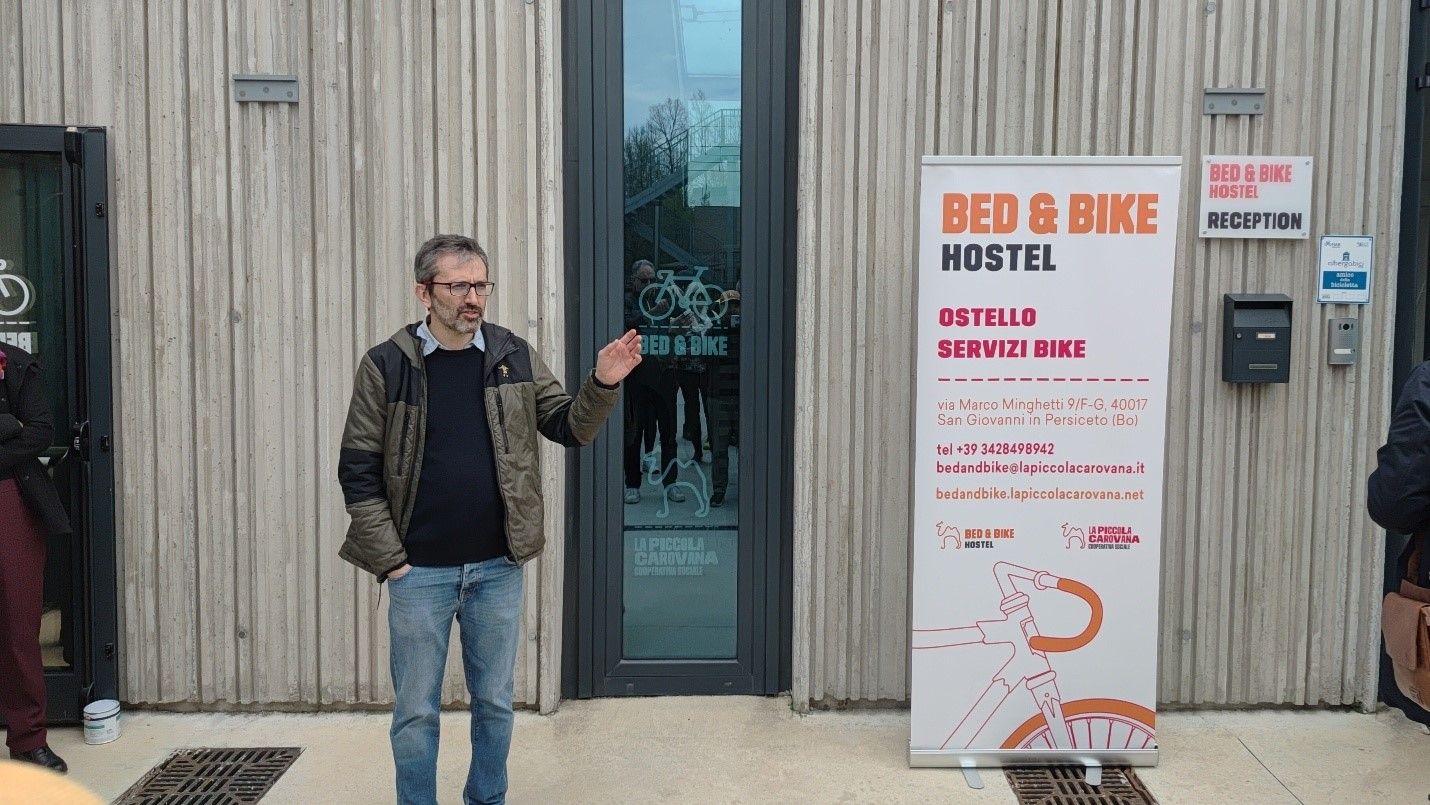
As part of the CycleRight project, ECF and its project partners are identifying and promoting best practice examples of safe, inclusive and climate-resilient cycling infrastructure. During a recent study visit to Bologna, one standout example was the EuroVelo 7 – Sun Route section between Osteria Nuova and Mirandola. This 46 km-long segment demonstrates a successful integration of strategic trans-European transport investment with cycling infrastructure, supporting both tourism and everyday mobility in rural areas.
The section of EuroVelo 7 between Osteria Nuova and Mirandola, in the northern part of the Emilia-Romagna region of Italy, was completed in 2021. Of the 46 km section, 32 km were built on disused railway track, and the rest mostly used pre-existing local and service roads. The total costs amounted to 5 million euros. Around two thirds of the section (27 km) are located within the borders of the Metropolitan City of Bologna, with the northern part reaching into the Province of Modena.

TEN-T and EuroVelo in synergy
The high-speed rail line from Bologna to Verona is a part of the trans-European transport network (TEN-T). The line was significantly upgraded between 2002 and 2009. Instead of adding additional track to the pre-existing single-track line, a (mostly) completely new line was built in parallel, up to 40 m away. This had the obvious advantage of keeping the old line operational while the new one was being constructed, and it allowed the adoption of more advanced technical solutions and higher safety standards.
When the rail investment was completed and the rail traffic was switched to the new line, it opened a possibility to turn the old itinerary into a cycle route. “This project is the perfect example of synergies that can be found between TEN-T infrastructure works and cycling: cost-efficient and supporting sustainable mobility. With multiple explicit references to cycling in the new TEN-T regulation, and promotion of such good practices, we expect that more infrastructure projects will use a similar approach,” says Agathe Daudibon, ECF EuroVelo and Cycling Tourism Director.

Tourism or commuting? Both!
The cycle track is signposted as a section of the EuroVelo 7 – Sun Route, but it is also an important part of the Bicipolitana Bolognese metropolitan cycle route network. On a cycling holiday, it can bring you 46 km closer to North Cape or Malta, and there are already tourist-oriented services developing along it. But thanks to the logical itinerary, without excessive detours (“straight like a tagliatella!”), the route can also be used by locals, for example, to get to the closest train station or to visit friends in the neighbouring village.

The completion of the remaining 10 km between Bologna and Osteria Nuova will increase the route’s importance for commuting. A temporary route has been signed to accommodate international cycle tourism, but the final route, to be completed in the coming years, will offer a higher-quality and more direct connection through Calderara di Reno, the wooded area north of the Airport, and the natural corridor of the Reno River.
The importance of adequate construction and maintenance
However, it’s not all sunshine and rainbows on the Sun Cycle Route. The triple-layer surfacing used on the section was supposed to be environmentally friendly and durable, but it is already displaying signs of age, only four years after the route’s opening. After several trials in different parts of Italy, the triple-layer surfacing is no longer used, as it has shown numerous technical issues.
On top of that, maintenance remains a major issue. “Unfortunately, the national legislation does not regulate the maintenance of cycling networks, there are no guidelines on who is responsible for this activity, nor are there specific funds allocated for maintenance. This is becoming a structural problem in Italy: public authorities invest public money in cycling infrastructure, but then the infrastructure is not maintained,” explains Catia Chiusaroli, Head of the Mobility Planning Office at the Metropolitan City of Bologna. “Thanks to the Sun Cycle Route, we are experimenting with agreements between authorities to manage maintenance in an adequate and coordinated manner. The agreement for the Sun Cycle Route stipulates that the individual municipalities are responsible for ordinary maintenance with the supervision of an external company, while the Metropolitan City of Bologna handles extraordinary maintenance. As it was the first agreement of this type, it still requires some adjustments to ensure more timely and better aligned interventions.”
About CycleRight
The CycleRight project, an Interreg Europe project co-funded by the European Union, aims to improve a set of policy instruments targeting sustainable urban mobility by sharing good practices from the eight participating regions. The learnings will be fed into a Climate Resilient and Inclusive Planning Cycling Guide. Read more and follow the CycleRight project on its website.
Disclaimer: This article only reflects the author’s views. The Interreg Europe programme authorities are not liable for any use that may be made of the information contained therein.
Republished from the European Cyclists’ Federation (ECF) website, the original article is available at: https://www.ecf.com/en/news/sun-cycle-route-a-synergy-of-trans-eu-transport-investments-cycling-tourism-and-rural-mobility/

